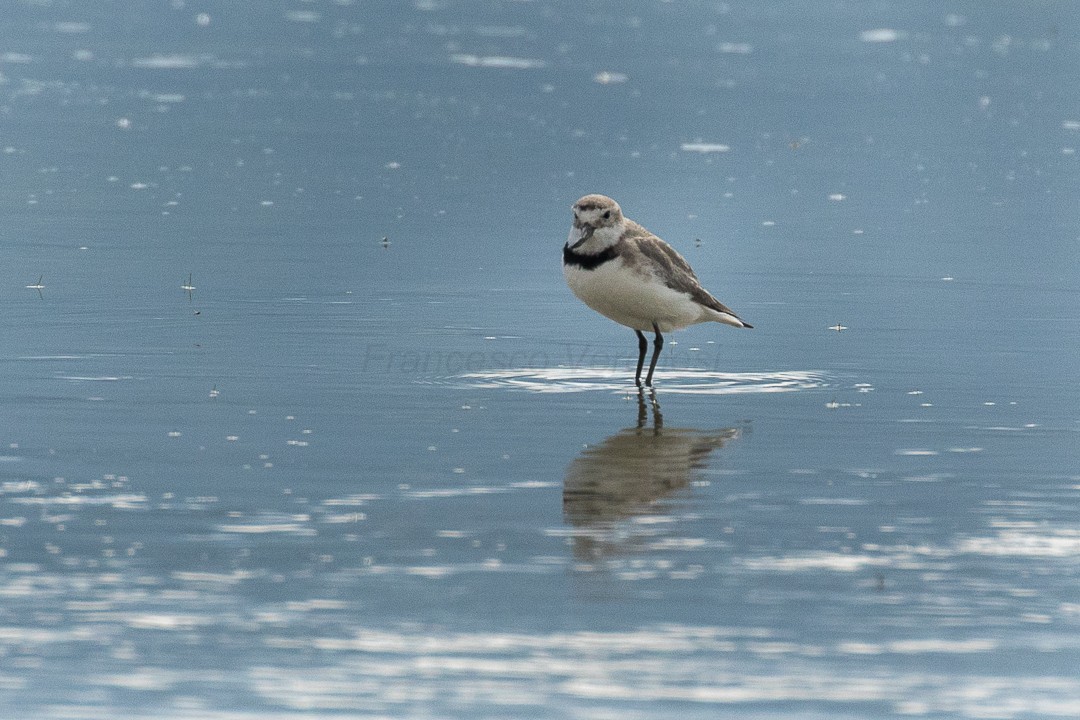Wrybill
A species of Wrybill Scientific name : Anarhynchus frontalis Genus : Wrybill
Wrybill, A species of Wrybill
Botanical name: Anarhynchus frontalis
Genus: Wrybill
Content
Description General Info
 Photo By Francesco Veronesi , used under CC-BY-SA-2.0 /Cropped and compressed from original
Photo By Francesco Veronesi , used under CC-BY-SA-2.0 /Cropped and compressed from original Description
The wrybill is a small, plump plover, measuring 20 to 21 cm (7.9–8.3 in) in length and weighing between 43 and 71 g (1.5–2.5 oz). The plumage is slightly sexually dimorphic. The male has a white forehead and pale grey crown, nape, back, wings and tail and a white throat, breast, belly and rump, with a thin black band across the breast. This band is thinner in the female, and much less distinct in both sexes in the non-breeding season. The other difference between the sexes is a small black bar between the white forehead and the grey crown, which is present in the males but not the females. As with the breast band it is reduced in the non-breeding season. The most distinctive feature of the bird is the long black bill, which is always curved to the right. The wrybill is the only species of bird with an asymmetrically turned bill. The eggs are very pale grey and covered with very small brown spots which blend in very well to the surrounding shingle As well as the eggs being very well camouflaged, the adult birds and chicks are very difficult to see when they are standing still. Chicks are very pale grey on upper half of body with black speckles and white on lower half of body grey. The wrybill's voice has been described as a short weet when in flight and used to signal alarm, and a harsher call is used to signal greater alarm. A chirring sound is used to challenge an aggressor. Fledglings and juveniles have a high-pitched short peep. 
Size
21 cm
Life Expectancy
11 years
Nest Placement
Ground
Feeding Habits
Wrybill forage in shallow waters for insect larvae, aquatic invertebrates, and occasionally small fish. Their beaks uniquely tilt right, possibly aiding in extracting prey from rock crevices.
Habitat
Wrybill's primary habitat lies within large, braided river systems replete with shingle and sand beds, often fed by glaciers and accompanied by fast-flowing waters. The species also inhabits dynamic inland riverine areas and coastal zones. During non-breeding periods, it frequents estuaries, tidal mudflats, and lagoons, occasionally venturing into agricultural fields or reclaimed wetlands.
Dite type
Omnivorous
General Info
Feeding Habits
Bird food type
Behavior
Wrybills like to roost in large flocks during winter which differs greatly from breeding time when they become very territorial towards other birds. They usually roost on one leg and hop away when approached too close. Wrybills are known to perform large aerial displays with their flocks, this usually happens shortly before the migration south. 
Distribution Area
The wrybill is endemic to New Zealand. It breeds on large braided rivers in Canterbury and Otago, South Island, preferring large dynamic rivers that will not become overgrown with weeds. The main breeding rivers include the Waimakariri, Rakaia, Rangitata, Waitaki and Ashley. It used to occur more frequently on smaller rivers, but has undergone a range contraction, and now only occupies around 60% of its estimated original range. After breeding, around late December till early February, they leave their breeding sites and migrate to shallow estuaries and sheltered coastal areas in the North Island. These areas include Firth of Thames, Manukau Harbour, Kaipara Harbour and Tauranga Harbour. 
Species Status
The wrybill is rated as vulnerable on the International Union for Conservation of Nature (IUCN)'s Red List of Threatened Species, The population declined during the 1800s as they were collected as museum specimens because of their strange bent bill. In 1940 they were protected and the population has increased from around 2000 birds to 5000 birds today. 